Tandem Industry Academia (TIA) Postdoc (2023)
UVC radiation sensor could help control forest fires
Project title:
Solar-blind UV-C radiation sensors
Approved funding:
224 608 €
Applicant:
Aalto University
Industrial partner:
Fenno-Aurum
“Working closely with a business partner helps us researchers better understand the end user’s requirements, which means we can also focus on commercially relevant parameters in our research.”
Hele Savin, principal investigator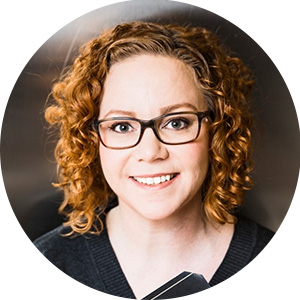
This joint project between Aalto University and Fenno Aurum involves the development of highly sensitive sensors for detecting UV-C radiation. One important application for such sensors would be in forecasting forest fires, as they could detect the UV-C rays of nascent forest fires before they begin to spread out of control. The wavelength range in question (100–280 nm) is very difficult to measure with traditional semiconductor-based detectors, as the signal is often drowned out by solar UV-A and UV-B radiation. The project will aim to use a material that is completely transparent to UV-A and UV-B rays but effectively absorbs and collects every UV-C photon. Such highly sensitive sensors would have application not only in forestry but also healthcare, space technology, and agriculture.
Improved wireless connectivity requires more effective radio interference cancellation
Project title:
Radio Interference Cancellation for Enhanced Wireless Connectivity and Security
Approved funding:
195 000 €
Applicant:
Tampere University
Industrial partner:
Bittium Wireless Communications
“Many other funding programmes require substantial funding from the business partner, which means investing in university research, yet this is not a straightforward subcontracting arrangement for them. FRIF funding helps to bridge the gap that remains between basic scientific research and industrial RDI.”
Taneli Riihonen, principal investigator
All types of wireless network suffer from radio interference, which happens when a signal from one radio improperly connects to a second radio receiver and therefore interferes with reception of a signal from a third radio. This happens not only in mobile phone networks but also between wireless field radios stationed in the same location in military messaging systems. In this project Tampere University and Bittium will be pooling their expertise to address radio interference problems by developing signal processing methods for radio receivers. The partnership will produce new knowledge on methods of cancelling radio interference for both scientific and industrial use and verify the applicability of these methods in commercial products. The data from the research will provide a foundation for the development of improved wireless radio devices and pave the way to better wireless connectivity in both civilian/commercial and military domains.
Next-generation lithium batteries are safer and store more energy
Project title:
Innovative Approaches for Enhancing Lithium Negative Electrode Stability in Solid-State Batteries
Approved funding:
215 415 €
Applicant:
Aalto University
Industrial partner:
Pulsedeon Oy
“FRIF funding is well suited to strengthening industry-academia cooperation and at the same time allows us to focus on doing research.”
Tanja Kallio, principal investigator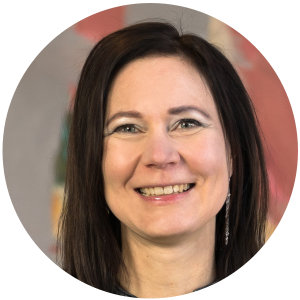
This joint project between Aalto University and Pulsedeon involves the development of next-generation lithium batteries and related manufacturing technology. The aim is to improve the safety and energy storage capacity of lithium batteries and ultimately to develop a new method for manufacturing metallic lithium negative electrodes. The project will benefit the scientific community by providing new knowledge and understanding about coating metallic lithium, while the battery technology industry will gain access to a new and enhanced coating method. There are numerous applications for safer lithium batteries with high energy storage capacity, from smartphones to electric vehicles. The expertise and know-how created in the project could see Finland turn into a forerunner in next-generation battery manufacturing technology.
Semiconductor materials development can impact the entire value chain in the semiconductor industry
Project title:
Boosting the efficiency of semiconductor devices with atomistic interface control
Approved funding:
170 638 €
Applicant:
University of Turku
Industrial partner:
Comptek Solutions
“Sometimes it’s necessary to take very narrow focus on one single aspect of technology in order to improve it and boost its performance across the entire value chain. Here, TIA funding provides a valuable funding mechanism for 1-on-1 collaborations that can lead to considerable advances at shorter time-scales.”
Milica Todorovic, principal investigator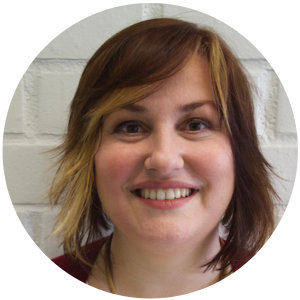
Semiconductor wafers are widely used in optoelectronics (e.g. LED TVs), solar cells and computer technology, all of which are fast-growing industries. Advances in semiconductor materials and devices can therefore significantly impact the entire value chain in the semiconductor industry. In this project, researchers from the University of Turku will be closely analysing the surfaces and interfaces inside semiconductor structures produced by Comptek Solutions. A better understanding of the internal microstructure of semiconductor materials will allow the project’s business partner to adapt and apply these materials to different technologies and increase their offering and revenue. This collaboration will open new research avenues for the academic community and strengthen Finland’s competitive position in the global semiconductor market.
Advances in cone beam imaging contribute to improved diagnostics and new imaging innovations
Project title:
Deep learning-based image reconstruction for low-dose cone beam computed tomography
Approved funding:
170 463 €
Applicant:
University of Eastern Finland
Industrial partner:
Planmeca Oy
“At the CoE in Inverse Problems we have long been engaged in basic research related to mathematical CT modelling and computation methods. Funding from the Finnish Research Impact Foundation gives us an excellent opportunity to translate the knowledge we’ve accumulated into practical applications together with an industrial partner.”
Ville Kolehmainen, principal investigator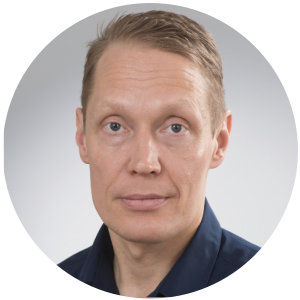
Cone beam computed tomography (CBCT), or cone beam imaging, is an X-ray technique developed for examination of the facial area, especially dentition and the jaw. This joint project between the University of Eastern Finland and Planmeca makes use of modern inverse mathematics and deep learning to develop CBCT technology. The project will improve the accuracy of cone beam imaging, and the mathematical methods developed will also be applicable to other imaging methods, such as magnetic resonance imaging and PET imaging. Advances in cone beam imaging will lead not only to new commercial imaging innovations but also to improvements in medical diagnostics. The benefits for the patient will include reduced radiation stress, faster imaging and new imaging opportunities.
Lower-emission internal combustion engine machines require a comprehensive understanding of aerosol emissions from machinery and fuels
Project title:
Towards understanding of the effects of electrification on primary and secondary aerosol emissions from machinery: e-fuels and hybrid powertrains (EPSA)
Approved funding:
212 108 €
Applicant:
Tampereen yliopisto
Industrial partner:
AGCO Power
“This funding is ideal for a collaboration between a university and a business company where the research question is important to both partners and where the expertise of both is needed to find a solution.”
Topi Rönkkö, principal investigator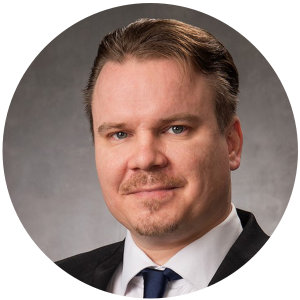
Emissions legislation is continuing to tighten around the world and manufacturers of machinery using internal combustion engines are under pressure to develop lower-emission solutions for their products. This collaboration between Tampere University and AGCO Power is focused on studying the total aerosol emissions of mobile machinery such as tractors and combines. The team’s aim is to understand how the engines in this machinery and the fuels they use affect their atmospheric emissions. This will generate completely new knowledge for future fuel and hybrid engine research as well as for the machinery and vehicle industry.
Other growth substrates can replicate the growth conditions achieved with peat
Project title:
Harnessing peat microbiome for safe and efficient crop production
Approved funding:
175 638 €
Applicant:
University of Helsinki
Industrial partner:
Neova Group
“I applied for this funding because it allowed me to enter in a partnership with a Finnish company and provided the opportunity to combine high-level academic research with commercial microbiological applications.”
Ville-Petri Friman, principal investigator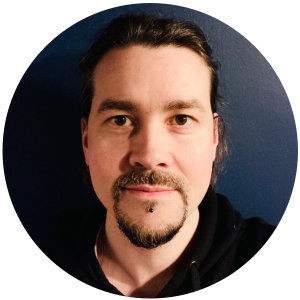
Peat has long been the dominant growth substrate in horticulture, but its use has declined in recent years because of its adverse environmental footprint. In this project, researchers from the University of Helsinki will be joining forces with Neova Group to produce new insights into how the benefits of peat can be transferred to other, alternative growth substrates. The focus will be on peat microbes. The project will explore the interactions of plants and microbes and create entirely new knowledge about the characteristics of peat microbe communities, which will widely benefit the scientific community. At the same time, the project will develop peat microbial biostimulants to improve growing conditions and inhibit the growth of pathogen microbes. The addition of these biostimulants to alternative growth substrates will create peat-like growing conditions. The commercial applications flowing from the research will benefit not only the business partner but also the horticultural and plant production sector more widely, as well as help improve global food security.
Stem cell research may lead to new treatments for corneal blindness
Project title:
Building a strong scientific foundation to cure blindness with stem cells
Approved funding:
272 551 €
Applicant:
Tampere University
Industrial partner:
StemSight
“The project will facilitate R&D efforts at the industry-academia interface, which is absolutely crucial to stem cell based treatments that require long-term development and investment.”
Heli Skottman, principal investigator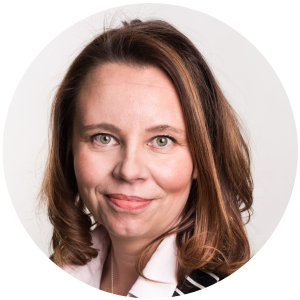
Corneal blindness is a global problem that causes substantial costs to society and significantly reduces patients’ quality of life. Often the only treatment available is corneal transplantation, but there is a persistent global shortage of transplants. In this project, researchers from Tampere University will be working closely with StemSight to refine a new innovative method developed at Tampere University, which can be used to produce corneal endothelial cells from highly multipotent stem cells. It is anticipated that in the future, these endothelial cells produced from stem cells can be transplanted to patients with dysfunctional corneal endothelial cells, opening up a treatment for corneal blindness without the need for transplants from deceased donors. At the same time, this work will provide a major boost to training as well as business development in Finland.
Better understanding of nanomedicines can speed up drug development, help eliminate waste and prevent costly failures
Project title:
Real-time label-free cell analysis platform for drug discovery and development
Approved funding:
228 164 €
Applicant:
University of Helsinki
Industrial partner:
Bionavis
“We’ve long wanted to do these kinds of measurements and study the interactions between drugs and drug transporters that cannot be studied with the life science tools currently available. When we made contact with our business partner and introduced these ideas, they were excited about working in a joint project and realized that the improvements we proposed would open up completely new markets for them in the drug development field. Another inspiring aspect about the funding was that the researcher gets to work in the company itself, which will promote their career and improve their employment prospects.”
Tapani Viitala, principal investigator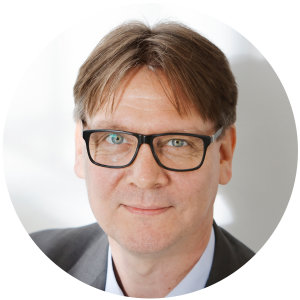
Nanomedicines are a growing area of pharmaceuticals that offer targeted and tailored diagnostic and treatment methods. However, the ability of nanopharmaceuticals to deliver drugs to cells still needs improvement because drugs are effectively removed from the human body and it is difficult with current methods to analyse their interaction with cells. The analytical platforms developed in this project will enable a better understanding of the properties of nanomedicines, the way they work and their efficacy. In their joint project, the University of Helsinki and Bionavis will be working to develop a cell-based measurement and analysis platform in order to gain a more in-depth understanding of the properties of drugs and drug transporters and speed up drug development. These so-called label-free analysis platforms will enable non-invasive, real-time and comprehensive analysis of cell behaviour in conditions similar to those in the human body. Ultimately, the project will deliver more efficient and safer drug development, contributing to save costs, waste, unnecessary animal testing and preventing costly development failures.
Challenges with immunotherapy eligibility can be resolved by studying immune cells
Project title:
Modulation of T-cell responses in cancer
Approved funding:
224 639 €
Applicant:
University of Turku
Industrial partner:
Orion Pharma
“This project excellently fits in with the FRIF funding model because it allows us to combine the complementary strengths and competencies of my research team and our business partner.”
Riitta Lahesmaa, principal investigator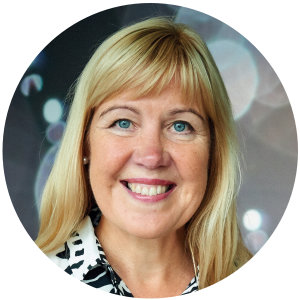
Immunotherapy is a form of treatment that uses the cells of the immune system to combat diseases. It has revolutionized the treatment of cancer and is now used for treating an increasing number of different types of cancer. In many cancers, however, immunotherapy does not elicit the desired response. Researchers from the University of Turku have joined forces with Orion Pharma to solve this challenge. Cancer cells have the ability to create an environment that paralyzes immune cells, or so-called T-cells. The project will produce information on mechanisms that regulate the function of T-cells in cancer tissue. The project team will be looking for new ways to modify T-cell responses and identify patients who may benefit from immunotherapy. New research data on T-cells will benefit both academic research, the pharmaceuticals industry and cancer patients. The project will also lay the ground for longer-term cooperation between academic and industry researchers.

